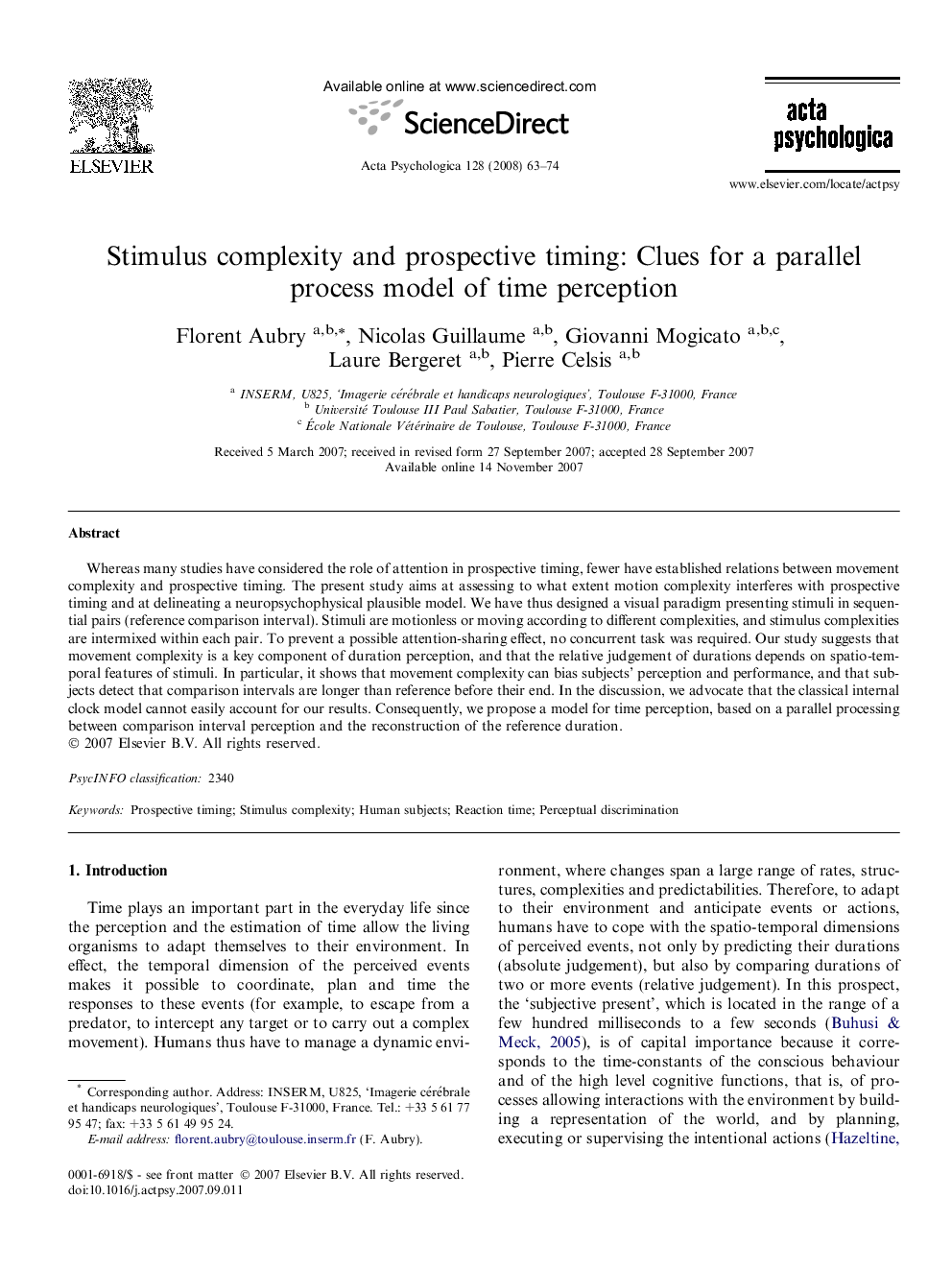| کد مقاله | کد نشریه | سال انتشار | مقاله انگلیسی | نسخه تمام متن |
|---|---|---|---|---|
| 920420 | 920287 | 2008 | 12 صفحه PDF | دانلود رایگان |

Whereas many studies have considered the role of attention in prospective timing, fewer have established relations between movement complexity and prospective timing. The present study aims at assessing to what extent motion complexity interferes with prospective timing and at delineating a neuropsychophysical plausible model. We have thus designed a visual paradigm presenting stimuli in sequential pairs (reference comparison interval). Stimuli are motionless or moving according to different complexities, and stimulus complexities are intermixed within each pair. To prevent a possible attention-sharing effect, no concurrent task was required. Our study suggests that movement complexity is a key component of duration perception, and that the relative judgement of durations depends on spatio-temporal features of stimuli. In particular, it shows that movement complexity can bias subjects’ perception and performance, and that subjects detect that comparison intervals are longer than reference before their end. In the discussion, we advocate that the classical internal clock model cannot easily account for our results. Consequently, we propose a model for time perception, based on a parallel processing between comparison interval perception and the reconstruction of the reference duration.
Journal: Acta Psychologica - Volume 128, Issue 1, May 2008, Pages 63–74